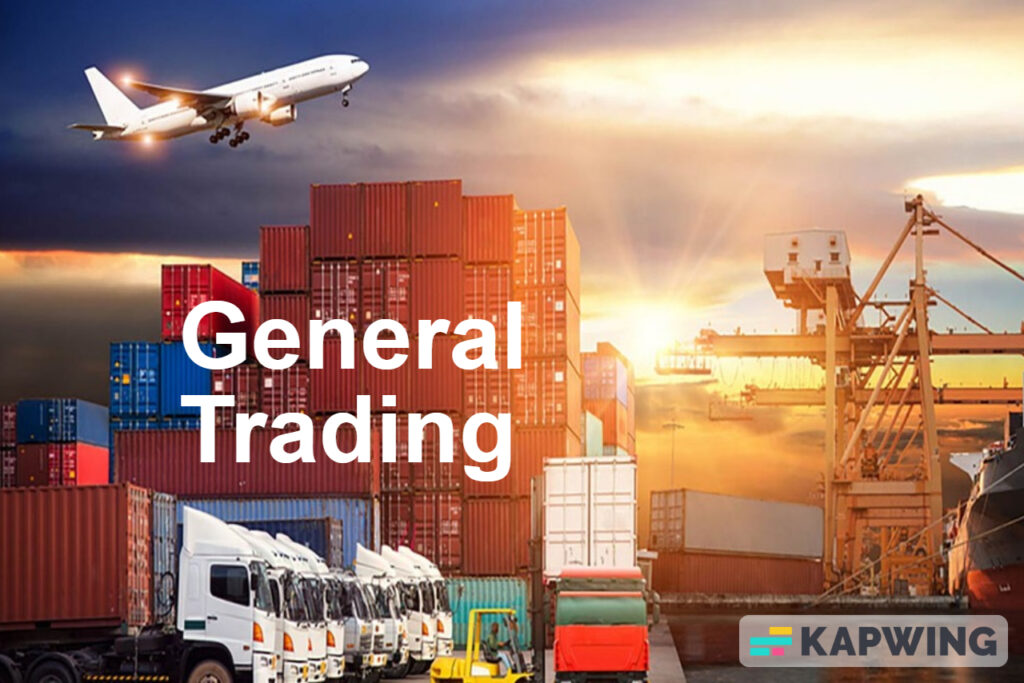Let's Look At What We do...
Politicians have won elections with promises to combat inflation, only to lose power after failing to do so...
The Dangers of Corruption and the Importance of Transparency and Accountability...
Economics is a part of social science which is associated with the study of production, households, ...
Regional Economic Forum. A forum is an online platform where users can engage in discussions, share...
Top 5 Long Range Private Jets
Good management and technical capabilities, compliance to best practices and good project management.
Evening Crest Sdn Bhd is a private limited company duly incorporated in Malaysia on 21 September 2018 under the Company Act 2016. The company’s business registration number is 20180134159 (1296186-U). Having its registered office at No. 26G, Jalan 4/76C, Desa Pandan, 55100 Kuala Lumpur, Malaysia and the company’s business operation/address is currently located at C-03A-01, Colonial Tower Empire City Damansara, Damansara Perdana, Jalan PJU 8, 47820 Petaling Jaya, Selangor, Malaysia.
Today, the company has a strong financial foundation with MYR 1,000,000.00 paid-up capital to operate and grow.
We have also been dedicated by a factoring house (registered with Ministry of Finance Malaysia) to utilise up to MYR 10,000,000.00 cash facilities to manage those contracts which are awarded by the government and GLCs procurements. Thus, it helps us to build trust with clients, creditors and suppliers, as it shows that the company has a strong financial foundation to sustain its operation.
Business Affiliates
CAPITAL INVESTMENTS – BUSINESS OF INVESTMENT HOLDING COMPANY AND FOR THAT PURPOSE TO ACQUIRE AND HOLD EITHER IN THE NAME OF THE COMPANY OR IN THAT OF ANY NOMINEE SHARES LAND BUILDING STOCKS, DEBENTURES, DEBENTURES STOCK, BONDS, NOTES, OBLIGATIONS AND SECURITIES ISSUED OR GUARANTEED BY ANY COMPANY WHEREVER INCORPORATED OR CARRYING ON BUSINESS.
FINANCIAL INTERMEDIARIES – DEPOSITORY
Capital Investments
Capital investment is considered to be a very important measure of the health of the economy. When businesses are making capital investments, it means they are confident in the future and intend to grow their businesses by improving existing productive capacity.
On the other hand, recessions are normally associated with reductions in capital investment by businesses.
Capital investments can refer to a business’s acquisition of a capital asset or a type of loan by a financial institution in a business. In the latter, a financial institution, commonly a venture capital group, loans a business money in exchange for a promise of repayment or a share of the profits.
It is defined as the money used by a business to purchase fixed assets, such as land, machinery, or buildings. The money may be in the form of cash, assets, or loans. Without capital investment, businesses may have a hard time getting off the ground.
The term capital investment has two usages in business. First, capital investment refers to money used by a business to purchase fixed assets, such as land, machinery, or buildings. Secondly, capital investment refers to money invested in a business with the understanding that the money will be used to purchase fixed assets, rather than used to cover the business’s day-to-day operating expenses.
For example, to purchase additional capital assets, a growing business may need to seek a capital investment in the form of debt financing from a financial institution or equity financing from angel investors or venture capitalists.
Capital investment gives businesses the money they need to achieve their goals. There are typically three main reasons for a business to make capital investments: (1) To acquire additional capital assets for expansion, which enables the business to—for example—increase unit production, create new products, or add value, (2) To take advantage of new technology or advancements in equipment or machinery to increase efficiency and reduce costs. and (3)To replace existing assets that have reached end-of-life (a high-mileage delivery vehicle or an aging laptop computer, for example).
Introduction to Corporate FinanceWhat is Capital Investments?Useful links
Maybank – Receiving Money From Overseas
Remarks
Productive private sector investment is an important component of developing countries’ growth strategies. Attracting FDI helps to link a country’s economy to global value chains and facilitates economic upgrading. FDI brings investment, jobs, increased exports, supply chain spillovers, new technologies and business practices to countries. While the benefits of FDI are well recognized, they do not flow without a conducive policy, legal and institutional environment…The World Bank.
The Malaysian economy has always been dependent on foreign direct investment (FDI). This is unlike certain other East Asian countries such as Korea, Taiwan and Japan whose economies have been powered essentially by locally owned corporations. As a result, whereas these countries have been able to produce large, internationally-known and technologically advanced corporations, this is not the case with Malaysia. Therefore, questions can be raised as to whether Malaysia’s reliance on foreign corporations has stifled the process of developing indigenous technological capabilities...Mohd Nazari Ismail
Malaysia has always valued foreign direct investments (FDI) as it contributes toward employment, exports and technology transfer, besides enabling the country to join regional production networks. It is therefore not surprising that the remarkable rebound in FDI in 2021 (Figure 1) was celebrated with much media fanfare, especially since FDI has been on the decline since 2016…Tham Siew Yean
For the past three decades, the Milken Institute has served as a catalyst for practical, scalable solutions to global challenges by connecting human, financial, and educational resources to those who need them. Guided by a conviction that the best ideas, under-resourced, cannot succeed, we conduct research and analysis and convene top experts, innovators, and influencers from different backgrounds and competing viewpoints. We leverage this expertise and insight to construct programs and policy initiatives. These activities are designed to help people build meaningful lives in which they can experience health and well-being, pursue effective education and gainful employment, and access the resources required to create ever-expanding opportunities for themselves and their broader communities…Milken Institute

Foreign Direct Investment and its Roles in Economic Development
Foreign Direct Investment | International Business
MIDA – FDI – Malaysia Promotion
Aircraft Trading
Nearly half of all airplanes in commercial service globally are leased. Those leases give airplane owners and operators in the world a large degree of flexibility, which is demonstrated by increasing annual aircraft trading volumes that have doubled over the past five years.
When you consider that the typical leased narrow-body aircraft changes operators and owners an average of four times during its service life, it explains why there is $30 billion worth of commercial aircraft trading annually.
Since airplane trading and leasing go hand in hand, let’s examine several reasons why you should consider trading aircraft, the potential benefits, and the capabilities you need in an airplane trader partner.
We handle all tasks related to the buying and selling of aircraft – business/private jets, ensuring a successful trade. We have established good working relationships with aircraft manufacturers and sales agents.
Whether you are planning to buy or sell one, we can provide you with a reliable aircraft trading service and assist you in related deals.
We have established close relationships with organisations such as CAAC, financing banks, customs and legal firms.
We provide customers with a total financing scheme and related consultancy service.
Our legal consultant will be present throughout the transaction process, reviewing legal documents and ensuring the successful completion of the deal.
Cessna Citation Latitude / #1 Best-Selling Midsize Business Jet
MAKER: Airbus/Boing/Bombardier/Cessna-Textron/Dassault/Embraer/Gulfstream/Others
Remarks:
The air transport industry is expanding and the future of aviation is a bright one. In 2017, airlines worldwide carried around 4.1 billion passengers. They transported 56 million tonnes of freight on 37 million commercial flights. Every day, airplanes transport over 10 million passengers and around USD 18 billion worth of goods. This indicates the significant economic impact of aviation on the world economy, which is also demonstrated by the fact that aviation represents 3.5 per cent of the gross domestic product (GDP) worldwide (2.7 trillion US dollars) and has created 65 million jobs globally. Aviation provides the only rapid worldwide transportation network, generating economic growth, creating jobs, and facilitating international trade and tourism. Aviation has become the enabler of global business and is now also being recognized by the international community as an essential enabler to achieving the UN Sustainable Development Goals. The aviation sector is growing fast and will continue to grow. The most recent estimates suggest that demand for air transport will increase by an average of 4.3% per annum over the next 20 years...United Nations Specialized Agency.

Aviation Industry Bounces Back
Why So Many Airlines Going Bankrupt
Inside World’s Fastest Private Jets
Air Partner – Private Jets Guides
BUSINESS OF BUILDERS AND CONTRACTORS OR CONSTRUCTION WORK OF ANY KIND AND THE DEMOLITION OF ANY STRUCTURE.
Construction Industry
Construction is a general term meaning the art and science to form objects, systems, or organizations, and comes from Latin construction and Old French construction. To construct is the verb: the act of building, and the noun is construction: how something is built, the nature of its structure.
There has always been a strong correlation between construction sector and economic growth of most countries. The contribution to the gross domestic product (GDP) of the nation as well as its socio-economic advancement by the construction sector is substantial through capital accumulation, revenue generation and employment creation, among others.
The construction industry has more than 100 million jobs worldwide, accounting for 6% of global GDP. The added value of the construction industry accounts for about 5% of GDP in developed countries, and 8% of GDP in developing economies.
The construction industry not only has a direct impact on the global economy but also has important links with other industries, which means that its impact on GDP and economic development far exceeds the direct contribution of construction activities. The improvement of infrastructure promotes GDP growth, and the availability of infrastructure can increase productivity and promote competition and cooperation.
Infrastructure investment is critical for the most advanced economies and countries in the early stages of development. For developing economies, infrastructure such as the construction of roads and the installation of reliable electricity will have a transformative impact on citizens’ lives and business prospects. In more mature economies, keeping up with demand and building new and upgraded infrastructure is also the key to sustaining economic growth.
The scale of the world construction market is constantly expanding. According to market survey data, the scale of the world construction market has grown from USD 9.5 trillion in 2014 to USD 11.4 trillion in 2019, with a compound annual growth rate of 3.71% from 2014 to 2019.
Forecast of the development prospects of the global construction industry. It is predicted that the total output of the global construction industry in 2030 will increase by 85% compared with 2014, reaching 17.5 trillion US dollars, with a compound annual growth rate of 3.9%. The cumulative output value of the global construction industry from 2016 to 2030 is expected to reach US$212 trillion.
In Malaysia, construction is a huge industry. With construction projects popping up left and right, and sometimes, it’s hard to find the best construction company for your needs.
The prospects of the global construction industry are promising. The main driving forces of market growth are growth of urbanization and population, housing market, and infrastructure.
Remarks:
Construction industry will be an economic driver over the medium term with growth averaging 4.4% between 2020 and 2025 – higher than the estimated growth in both the manufacturing and service sectors. Over the period 2020 to 2030 growth in construction output is projected to average approximately 3.5% per annum. The global construction market is expected to grow by US$4.5 trillion over the decade to 2030 to reach US$15.2 trillion. Just four countries — China, India, US, and Indonesia — will account for almost 60% of this growth while the top 10 global construction markets are expected to account for almost 70% of the growth over the same period...www.marsh.com/uk





















